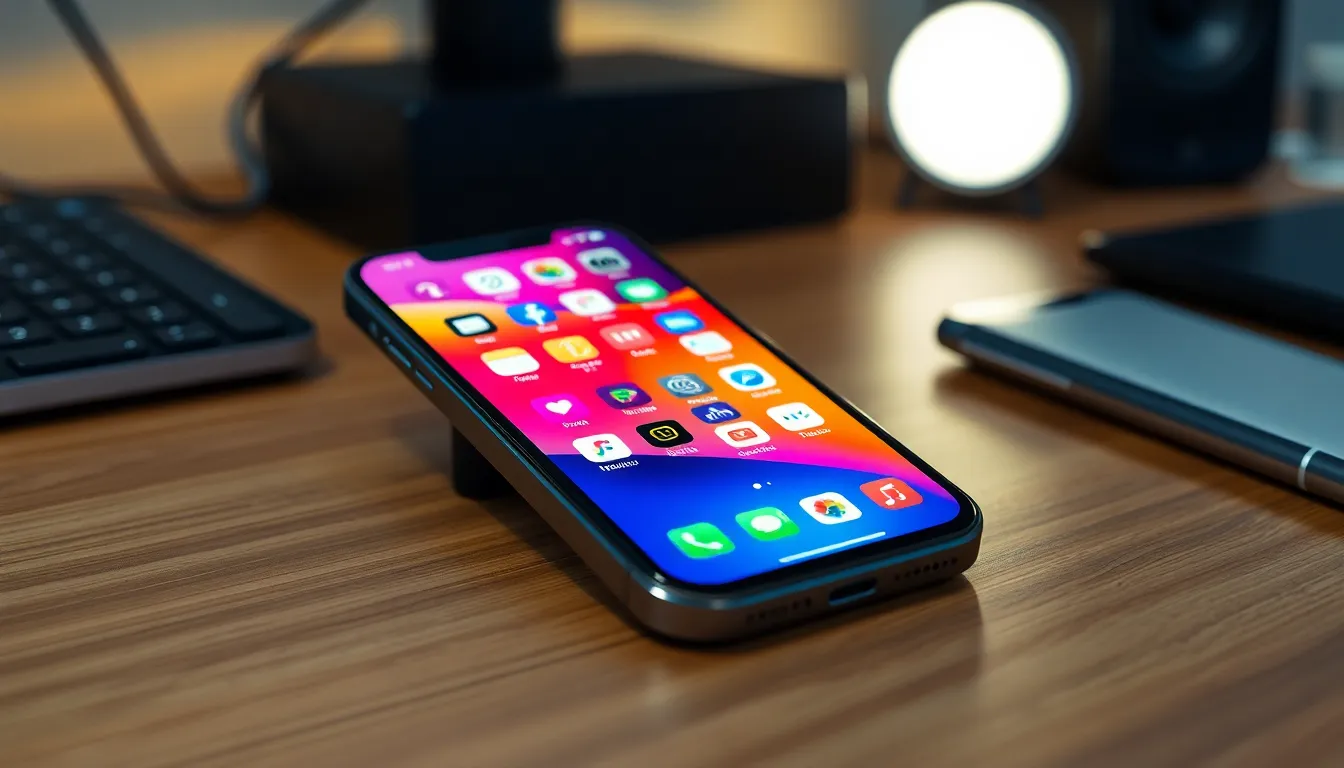Imagine having a smartphone that’s as free as a bird, soaring through the skies of customization and functionality. That’s the allure of a jailbroken iPhone. It’s like taking your device on a wild adventure, breaking free from the chains of Apple’s tight restrictions. With just a few tweaks, users unlock a world where they can install apps that aren’t available in the App Store and customize their devices to reflect their unique personalities.
Table of Contents
ToggleWhat Is A Jailbroken iPhone?
A jailbroken iPhone refers to a device modified to bypass Apple’s software restrictions. Users gain access to app installations not approved by Apple, allowing for greater customization opportunities. This process enables the installation of third-party applications, tweaks, and themes that enhance user experience. People often personalize their devices in ways that the standard iOS environment doesn’t allow.
Jailbreaking also offers the ability to customize settings and functionalities. Modified settings often change how notifications appear or how the user interface functions. Enhanced control over the iPhone includes the option to remove pre-installed apps, freeing up storage space. Many use the process to optimize performance by adjusting system configurations beyond standard options.
Security considerations arise with jailbreaking. While the freedom of customization attracts many users, it exposes the device to potential risks, including malware and data breaches. Apple’s support and warranty often become void once the device is jailbroken, discouraging some individuals from pursuing this option.
Regarding the legal aspect, jailbreaking remains a gray area in many regions. Users may face legal consequences depending on jurisdiction, as laws regarding software modification vary significantly.
In essence, a jailbroken iPhone represents a balance between enhanced freedom and potential risks. Those who choose to jailbreak their devices often seek to expand their iPhone’s capabilities far beyond typical usage limits. As a result, the appeal of jailbreaking continues to attract tech-savvy individuals eager to explore their devices’ full potential.
Benefits Of Jailbreaking

Jailbreaking provides significant advantages to iPhone users seeking more control over their devices. Users benefit from enhanced customization options and access to exclusive apps.
Enhanced Customization
Customization becomes a central feature of a jailbroken iPhone. Users can install themes and tweaks that change the device’s appearance and functionality. Custom launchers are easily added, letting individuals design home screens that reflect their style. Adjustments to system settings, such as modifying fonts or altering icons, create personalized experiences. Users can even tweak animations for a unique user interface. Greater flexibility leads to improved usability, allowing users to set their devices up in ways that best meet their needs.
Access To Exclusive Apps
Exclusive apps emerge as another major benefit of jailbreaking. Users gain access to apps not available in Apple’s App Store, expanding their options significantly. These apps often include advanced customization tools and system utilities that enhance device functionality. Additionally, developers frequently create jailbreak-only applications that provide unique features, such as file managers and system monitors. With these exclusive applications, users can maximize their iPhone’s potential, enabling tasks that were previously impossible. Accessing these alternative apps broadens the scope of what iPhone users can achieve with their devices.
Risks Of Jailbreaking
Jailbreaking an iPhone introduces several risks that users should consider before proceeding. While the ability to customize and install unauthorized apps is enticing, it comes with significant drawbacks.
Security Vulnerabilities
Security vulnerabilities become more pronounced on a jailbroken device. Bypassing Apple’s built-in restrictions invites risks such as malware, which can compromise personal information. Unofficial app stores often host malicious software. Users may inadvertently download harmful applications, jeopardizing device security. Data breaches and privacy invasions occur more frequently among jailbroken phones. Many users find that jailbroken devices lack the same level of security updates offered by Apple, leaving them exposed to known threats. Copyright infringement can arise if users download pirated software illegally, raising potential legal concerns.
Potential Warranty Void
Jailbreaking an iPhone typically voids warranty coverage provided by Apple. Once the device is altered, any future support or repairs become the user’s responsibility. Apple often refuses service for jailbroken devices, even for non-software related issues. This lack of support can lead to higher costs if repairs are necessary. Additionally, restoring the device to factory settings may not guarantee any warranty reinstatement, leaving users without recourse. Costly repairs or replacements may arise as a consequence of jailbreaking, making it imperative for users to weigh the benefits against these potential risks.
How To Jailbreak An iPhone
Jailbreaking an iPhone requires specific tools and a clear process. Following the right steps simplifies the experience while granting access to advanced customization.
Necessary Tools
To begin, users typically need a computer and a USB cable to connect their device. Popular tools for jailbreaking include Unc0ver and Checkra1n, both known for their effectiveness. Each tool works with different iOS versions, so checking compatibility beforehand is essential. Users should also back up their data to prevent loss during the jailbreak process.
Step-By-Step Guide
Begin by downloading the chosen jailbreak tool on the computer. Install the tool, then connect the iPhone using a USB cable. After launching the tool, follow the on-screen instructions. Typically, these involve putting the device into DFU or recovery mode. Once the tool recognizes the iPhone, proceed with the jailbreak process. Completing the jailbreak might take a few minutes, at which point the device will restart. Finally, check for Cydia, a package manager for downloading additional apps and tweaks, to confirm successful jailbreaking.
A jailbroken iPhone represents a world of possibilities for users seeking greater control over their devices. With the ability to customize and install apps beyond Apple’s ecosystem, it caters to those who value individuality and functionality. However, this freedom comes with notable risks that shouldn’t be overlooked. The potential for security vulnerabilities and the loss of warranty can lead to significant challenges down the line.
Ultimately, the decision to jailbreak hinges on balancing the desire for personalization against the inherent risks involved. For tech enthusiasts willing to navigate these challenges, a jailbroken iPhone can unlock an enhanced user experience that’s truly unique.





